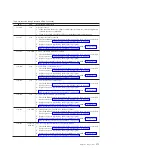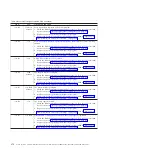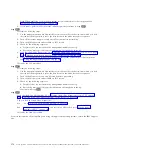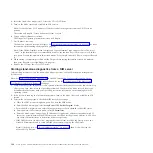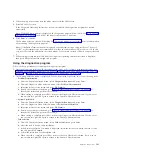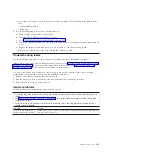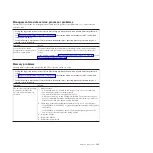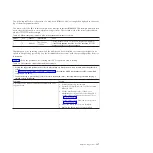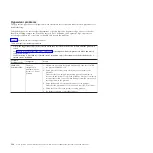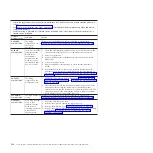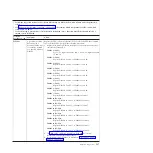
Drive problems
Identify hard disk drive problem symptoms and what corrective actions to take.
v
Follow the suggested actions in the order in which they are listed in the Action column until the problem is
solved.
v
See Chapter 3, “Parts listing, type 7891,” on page 225 to determine which components are CRUs and which
components are FRUs.
v
If an action step is preceded by “(Trained service technician only),” that step must be performed only by a
trained service technician.
Symptom
Action
Not all drives are recognized by
the disk drive firmware or
operating system.
1.
Run diagnostics
2.
Reseat the drive
3.
Run the diagnostics again
4.
If the remaining drives are recognized, replace the drive that you removed
with a new one.
System stops responding
during drive operating system
commands to test or look for
bad blocks.
1.
Run diagnostics
2.
Reseat the drive
3.
Run the diagnostics again
4.
If the drive diagnostic test runs successfully, replace the drive you removed
with a new one.
Intermittent problems
Identify intermittent problem symptoms and corrective actions.
v
Follow the suggested actions in the order in which they are listed in the Action column until the problem is
solved.
v
See Chapter 3, “Parts listing, type 7891,” on page 225 to determine which components are CRUs and which
components are FRUs.
v
If an action step is preceded by “(Trained service technician only),” that step must be performed only by a
trained service technician.
Symptom
Action
A problem occurs only
occasionally and is difficult to
diagnose.
1.
Check the Advanced Management Module event log for errors
2.
Make sure that:
v
When the blade server is turned on, air is flowing from the rear of the blade
server at the blower grill. If there is no airflow, the blower is not working.
This causes the blade server to overheat and shut down.
v
Ensure that the self configuring SCSI device (SCSD) bus and devices are
configured correctly.
184
Power Systems: Problem Determination and Service Guide for the IBM PS703 (7891-73X) and PS704 (7891-74X)


